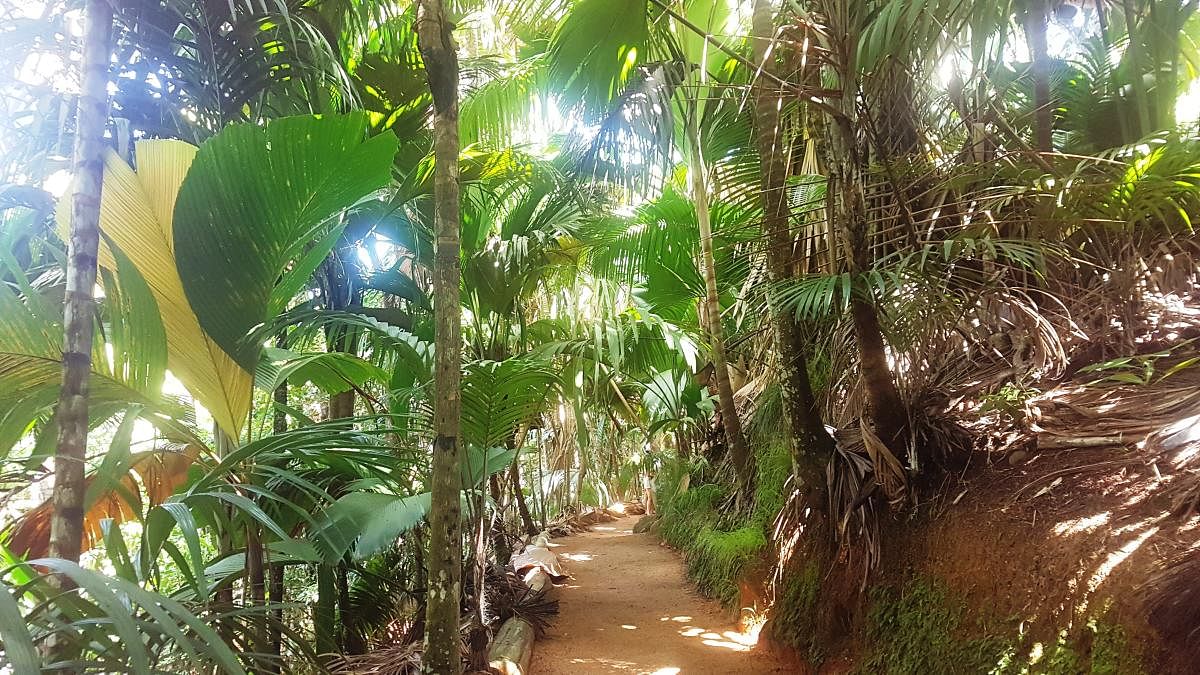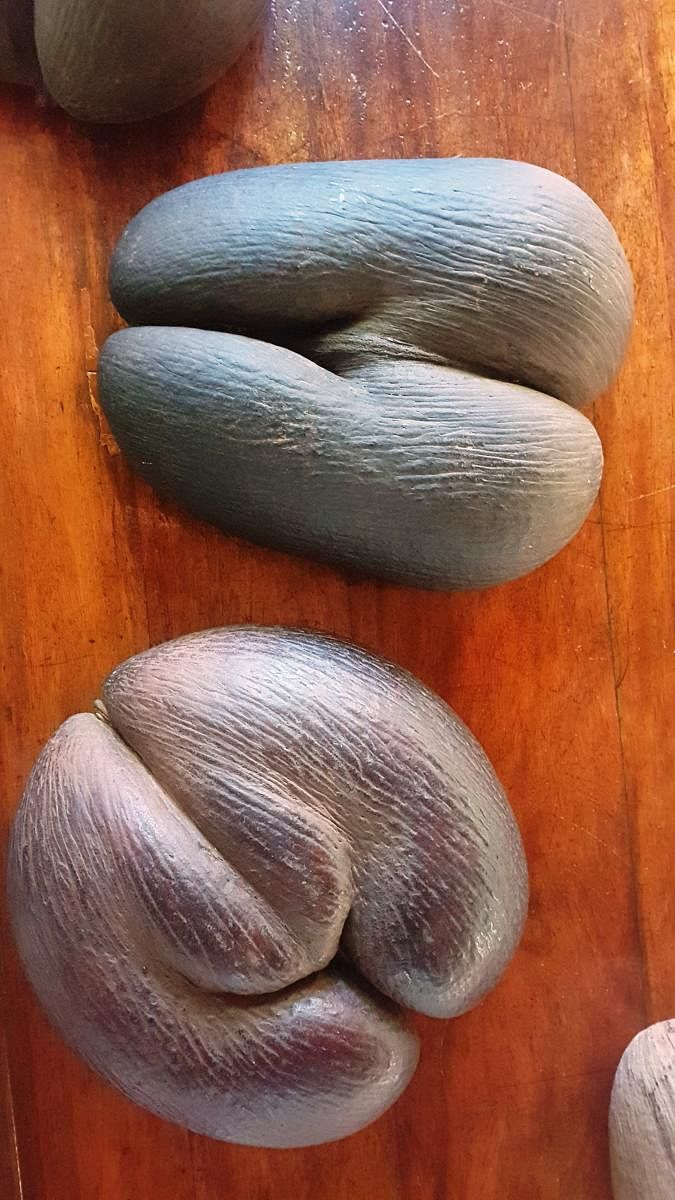

What does this aroma remind you of, asked my guide Medina Laboudallon as she extended her palm which had a few yellow flowers in it? As I took a whiff of the fallen flowers that Medina had just collected from under a towering tree, the distinct aroma of basmati rice stood out. With the lingering fragrance, we started our tour of Vallée de Mai which is a nature reserve located on the island of Praslin in Seychelles.
A UNESCO World Heritage Site, this primary forest is home to the rare endemic palm called coco de mer. Growing more than 25 metres in height, the seeds germinate after 3-6 months. The trees mature between a period of 20-30 years. Male and female palms grow separately. The male catkins contain a lot of pollen while the female palms bear fruit in the form of the largest and heaviest nut in the world. Each nut can weigh upto 25 kgs. It is not just the weight but also the shape of the nut that has garnered worldwide interest as it resembles a woman’s buttocks.
During the tour, I was taken to an overhead enclosure where a few ripened nuts were kept on display. The green nut that I had seen growing on trees had ripened to brown and taken the form of the female posterior. I did do the mandatory tourist activity of getting myself clicked with the well-endowed nut.
A few thousand coco de mer trees grow inside the reserve and this star attraction is omnipresent throughout Vallée de Mai. As we treaded past granite rocks which are typically found in Seychelles, crossing trees with sunlight playing hide and seek through the lush canopy, we stopped at the grandfather tree. This imposing coco de mer palm with tourists hugging it happily has graced quite a few Instagram feeds.
The reserve is home to six endemic palms and our next stop was at a screwpine called Horne’s Pandanus. Considered the most majestic and good looking of four of the screwpines found in Seychelles, it had a crown shaped like an umbrella. This shape is also the reason why in Creole it is known as the Vakwa parasol. With narrow and long leaves, its fruit is shaped like a ball, big in size with wedges. Once ripe, it turns to a lovely orange colour. Nocturnal fruit bats enjoy eating this fruit.
Another endemic tree of the country is Capucin whose timber is in high demand. The underside of its mature leaves was reddish-brown and so was its bark. The word Capucin in Creole has its origin in the way a large seed is formed. The shape of the seed is very similar to the head of a capuchin monk wearing a cowl. The fruit is eaten by fruit bats. Though we kept our eyes and ears open to catch a glimpse of the rare giant bronze gecko, it eluded us. Instead, we spotted a Praslin snail that was crawling up a tree. As we walked deeper into Vallée de Mai, Medina suddenly gestured to me to remain silent whispering that she could hear the musical whistle of the unique Seychelles black parrot which is the national bird of the country. With childlike excitement, she stealthily walked a few steps ahead and showed me the elusive bird.
Perched atop a tree, this black parrot was merrily feeding on the palm fruit. The black parrot is native to Praslin and makes its nest in forests abundant with mature palm trees. Vallée de Mai is its core breeding habitat while the population is about 900 birds. We continued to admire the parrot for a few more seconds before it flew away. It was futile to capture it on the mobile and sighting it will remain a visually delightful memory.
Chuffed, we walked further up to the viewpoint to get a vantage view of the thick green blanket of trees. Sitting on a wooden bench at the viewpoint, surrounded by trees, listening to birds chirping, I felt inwardly calm and rejuvenated. After spending some time forest bathing, it was time to head back.
Since we had taken the circular path to reach the viewpoint, we decided to take the central path on our way back down.
The cedar path connects the circular and central paths. Even though I had spent a couple of hours at Vallée de Mai admiring its flora and fauna, there was still so much of this diverse ecosystem yet to explore. And so with a wish to visit again, I left this paradise which has been referred to as the Garden of Eden.
Seychelles is now open to Indians without any quarantine or travel restrictions but a negative RT-PCR is a must.